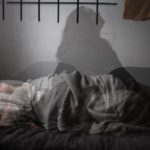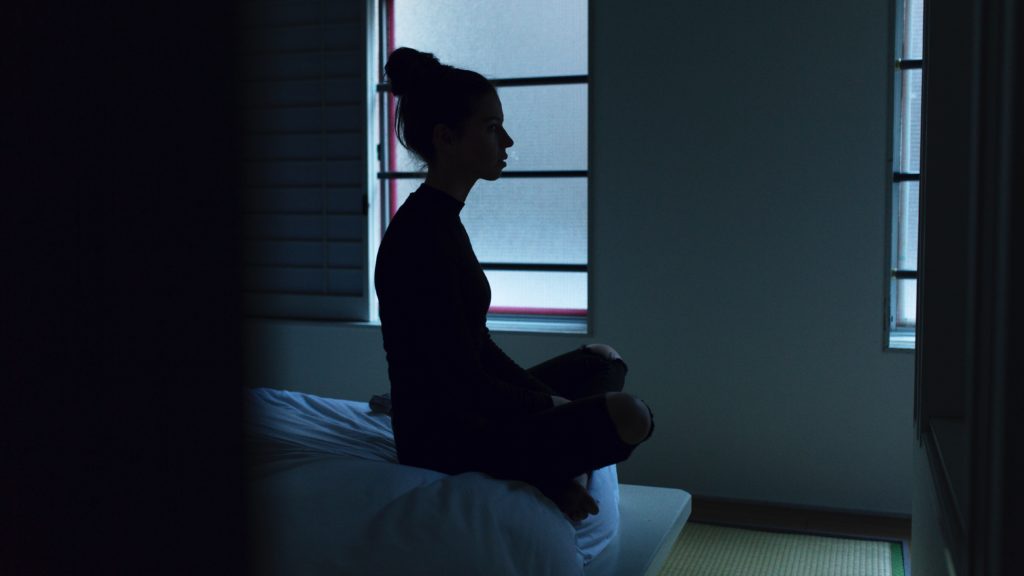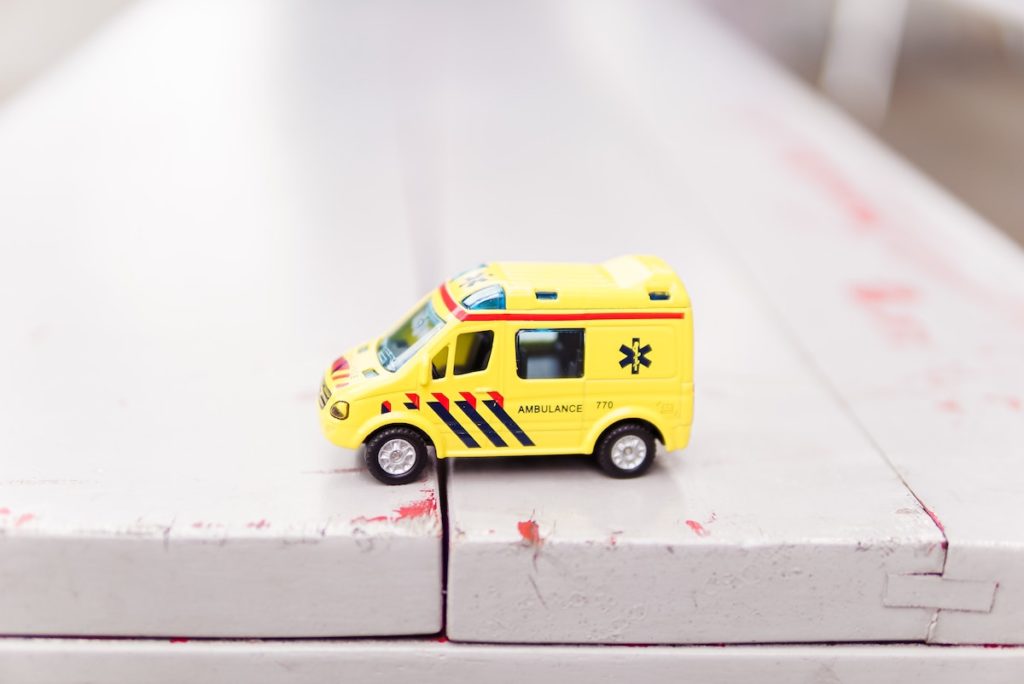
Suicide is a leading cause of preventable death worldwide, with more than 788,000 people taking their own lives each year (WHO, 2016). Those who die by suicide represent only the “tip of the iceberg” of those impacted by this phenomenon. An even higher proportion of the population report an attempt to take their own life, or thoughts about doing so. As a result, health professionals, researchers, and policy-makers emphasise the importance of mapping out the complex pathways driving suicidal thoughts and behaviours. A fundamental goal of research in this field is to identify risk factors that are amenable to intervention and that can offer hope to those in suicidal crises.
According to E. Joseph Cossman “the best bridge between despair and hope is a good night’s sleep”. However, for some, obtaining sufficient good quality sleep is an overwhelming challenge. This is problematic as sleep plays a crucial role in supporting positive mental health (Harvey, Murray, Chandler, & Soehner, 2011). Also being unable to sleep may mean that individuals who are experiencing psychological distress are denied one opportunity to escape their waking problems (Littlewood, Gooding, Kyle, Pratt, & Peters, 2016). These findings suggest that people who experience sleep disturbances may be at increased risk of thinking about or engaging in suicidal behaviour (Pigeon, Pinquart, & Conner, 2012).
Sleep has received increasing attention within this context, and in recent years, literature has highlighted clear links between a range of sleep problems and suicidal phenomenon Bernert, Kim, Iwata, & Perlis, 2015; Littlewood et al., 2017; Russell et al., 2019). Despite the role of hospitals, emergency departments, and ambulance services in suicide prevention, research examining these relationships within acute settings is sparse (Stanley et al., 2016).
As a result, Ogeil et al. (2020) set out to extend the existing evidence base by examining the relationships between sleep problems, suicidal ideation, suicide attempts and co-occurring factors in the context of ambulance attendances within the community.

Sleep disturbance is associated with heightened suicide risk, and despite the role of emergency services in suicide prevention, research examining these relationships within acute settings is limited.
Methods
Ogeil et al. (2019) examined clinical records from Ambulance Victoria across a five and a half year period (from 1 Jan 2012 to 30 Jun 2017). In total, the researchers analysed paramedic case notes from 97,198 suicide related ambulance attendances.
These cases were identified based on a review of the information obtained by paramedics at the scene, and included cases of suicidal ideation (i.e. an individual reported thinking about harming themselves, but had not acted on these thoughts) and suicide attempts (i.e. an individual had attempted to take their own life).
Information relating to sleep problems was collected from the patients themselves or from their “collateral informants” (e.g. parents, family members, or peers).
Additionally, they gathered data on age, gender, lifetime self-reported diagnoses of any mental health problems, alcohol intoxication, and benzodiazepine use at the time of ambulance attendance.
Results
Investigating the links between co-morbid risk factors and suicide related attendances
- Of the 97,198 suicide related attendances, 56.4% were related to suicidal ideation, and 43.6% occurred as a result of individuals attempting to take their own lives
- Sleep problems were noted in 1,788 (1.8%) of these attendances, and were more common in cases of suicidal ideation (vs. attempt)
- In over three quarters of suicide related ambulance attendances, patients endorsed a lifetime history of having a mental health diagnosis (most commonly depression).
Examining the influence of time of day on suicide related ambulance attendances
- Time of day differences in ambulance attendance for both suicide ideation and attempt were uncovered. More specifically, a greater proportion of attendances for suicidal ideation occurred in the afternoon, whilst paramedics were more likely to attend in relation to a suicide attempt at night
- Where patients endorsed sleep problems, attendances relating to suicidal ideation were more likely to be elevated at night and cases characterised by suicide attempts were more likely during mid-morning to mid-day.
Determining whether sleep disturbances predict suicidal ideation and attempts independent of co-occurring factors
- Different patterns of associations emerged for suicidal ideation and suicide attempts. These relationships were independent of a range of important covariates (such as gender, lifetime diagnoses of mental health difficulties and alcohol intoxication)
- Self-reported sleep disturbances predicted an increase in ambulance attendances related to suicidal ideation
- Sleep problems were associated with a reduced likelihood of requiring suicide attempt related paramedic attendance.
Time of day differences in ambulance attendance for both suicide ideation and attempt were uncovered with a greater proportion of attendances for suicidal ideation occurred in the afternoon, whilst for suicide attempt at night.
Conclusions
The authors concluded that
sleep disturbances had a unique role in these attendances over and above common co-occurring factors including drug use and a number of mental health diagnoses.
- When considering findings within the context of previous investigations the link between sleep disturbances and suicidal ideation aligns with a growing body of research indicating that individuals who have trouble with their sleep are more likely to think about harming themselves
- However, the discovery that sleep problems were associated with a reduced likelihood of suicide attempt related attendance does contradict the existing evidence base
- Further research is needed if the field is to obtain a more nuanced understanding of these relationships within this novel setting.

The negative association between sleep disturbance and suicide attempt related ambulance attendances is in contrast to previous work, but replication within acute settings is necessary to advance understanding of this relationship.
Strengths and limitations
Although acute health settings play a crucial role in suicide prevention, research investigations on the link between sleep disturbances and suicide related phenomenon in this context are limited. Most individuals with suicidal ideation and/or behaviour do not come to the attention of health services; only a proportion of people do. Understanding more about the characteristics of this subpopulation is important in order to support patients effectively and prevent escalation or repetition. Ambulance services are a key frontline unit that responds to acute medical emergencies, thus this investigation is a welcome addition to the literature.
This study presents a novel contribution based on the large “internationally unique” dataset the researchers have utilised, and the range of covariates that have been taken into consideration. This is a strength of this research by providing the opportunity to determine whether sleep disturbance was associated with suicidal ideation and attempts over and above the contribution of co-occurring factors. That said, it would have been beneficial to consider the influence of current mental health difficulties within this context (as opposed to lifetime history). Another strength of this research was its detailed consideration of time of day effects on suicide-related ambulance attendances. Research investigating the link between sleep and suicide has seldom accounted for the fact that rates vary across a 24-hour period.
Whilst this study provides a strong foundation, there are some limitations on the interpretation and generalisability of findings. The main limitation of this work relates to the measurement of sleep:
- The authors do highlight that non-validated sleep assessment was employed, but there is a lack of detailed information on how data relating to sleep disturbances was collected, and which specific aspects of sleep were evaluated
- The authors highlight that some paramedics may not in fact have enquired about sleep when attending the scene (as a result of competing demands). Therefore, it is possible that some patients who were classified as not having a sleep problem will simply not have been asked to provide this information. This is problematic and suggests that caution should be taken when interpreting and generalising this relationship
- It is not clear which specific sleep disturbances were related to suicide in this context. This information is key to understanding the mechanisms driving these links, and develop specific empirically supported intervention plans.
Moreover, the cross-sectional nature of the data precludes examination of the directionality of the associations. As such, it is not clear whether sleep predicted the need for suicide related ambulance attendance, or whether the thoughts and/or behaviours that lead to the need for ambulance attendance influenced the patient’s sleep. This is particularly important given the dynamic and fluctuating nature of sleep, mental wellbeing, and suicidality across days. Issues with measurement and over-reliance on cross-sectional research designs are common within research investigating this link more broadly.

Future research should consider which specific aspects of sleep are associated with increased risk of suicide, and the mechanisms driving the link.
Implications for practice
- The authors suggested that sleep disturbance was likely under-reported in this context given the competing and more pressing demands faced by a paramedic. Given the role of sleep disturbance in relation to health and wellbeing, it would be useful to implement a brief and accessible measure of sleep disturbance at the assessment stage so that this information could inform subsequent care. Therefore, these results could have implications for initial training and continuing professional development within ambulance services
- The information provided in relation to time-of-day ambulance attendance patterns is particularly valuable and could have implications for ambulance service provision by highlighting when people are most likely to be experiencing acute crises and may require support within the community
- Findings reinforce the growing body of evidence supporting a potential role of sleep medicine for those at risk of experiencing suicidal crises
- Future research should investigate the role of specific sleep problems within this context and consider the psychological processes underlying these relationships. In particular, additional work along this line of investigation would further our understanding as to whether sleep problems reduce the likelihood of ambulance attendance for suicide attempts, and crucially, why this may be. It would also be valuable to consider whether these finding extend to self-harm more broadly (irrespective of motivation or intent).

Given the role of sleep disturbance in relation to health and wellbeing, these results could have implications for initial training and continuing professional development within ambulance services.
Statement of interests
None.
Links
Primary paper
Ogeil, R. P., Witt, K., Scott, D., Smith, K., & Lubman, D. I. (2020). Self-reported sleep disturbance in ambulance attendances for suicidal ideation and attempted suicide between 2012 and 2017. Journal of Affective Disorders, 265, 364-371.
Other references
Bernert, R. A., Kim, J. S., Iwata, N. G., & Perlis, M. L. (2015). Sleep disturbances as an evidence-based suicide risk factor. Current psychiatry reports, 17(3), 15.
Harvey, A. G., Murray, G., Chandler, R. A., & Soehner, A. (2011). Sleep disturbance as transdiagnostic: consideration of neurobiological mechanisms. Clinical psychology review, 31(2), 225-235
Littlewood, D. L., Gooding, P., Kyle, S. D., Pratt, D., & Peters, S. (2016). Understanding the role of sleep in suicide risk: qualitative interview study. BMJ open, 6(8).
Littlewood, D., Kyle, S. D., Pratt, D., Peters, S., & Gooding, P. (2017). Examining the role of psychological factors in the relationship between sleep problems and suicide. Clinical psychology review, 54, 1-16.
Pigeon, W. R., Pinquart, M., & Conner, K. (2012). Meta-analysis of sleep disturbance and suicidal thoughts and behaviors. The Journal of clinical psychiatry.
Russell, K., Allan, S., Beattie, L., Bohan, J., MacMahon, K., & Rasmussen, S. (2019). Sleep problem, suicide and self-harm in university students: A systematic review. Sleep medicine reviews. Apr;44:58-69
Stanley, B., Chaudhury, S. R., Chesin, M., Pontoski, K., Bush, A. M., Knox, K. L., & Brown, G. K. (2016). An emergency department intervention and follow-up to reduce suicide risk in the VA: Acceptability and effectiveness. Psychiatric services, 67(6), 680-683.
World Health Organization., 2016. Global Health Observatory data repository. Geneva
Photo credits
- Photo by Megan te Boekhorst on Unsplash
- Photo by Ben Blennerhassett on Unsplash
- Photo by Icons8 Team on Unsplash
- Photo by Zhen Hu on Unsplash
